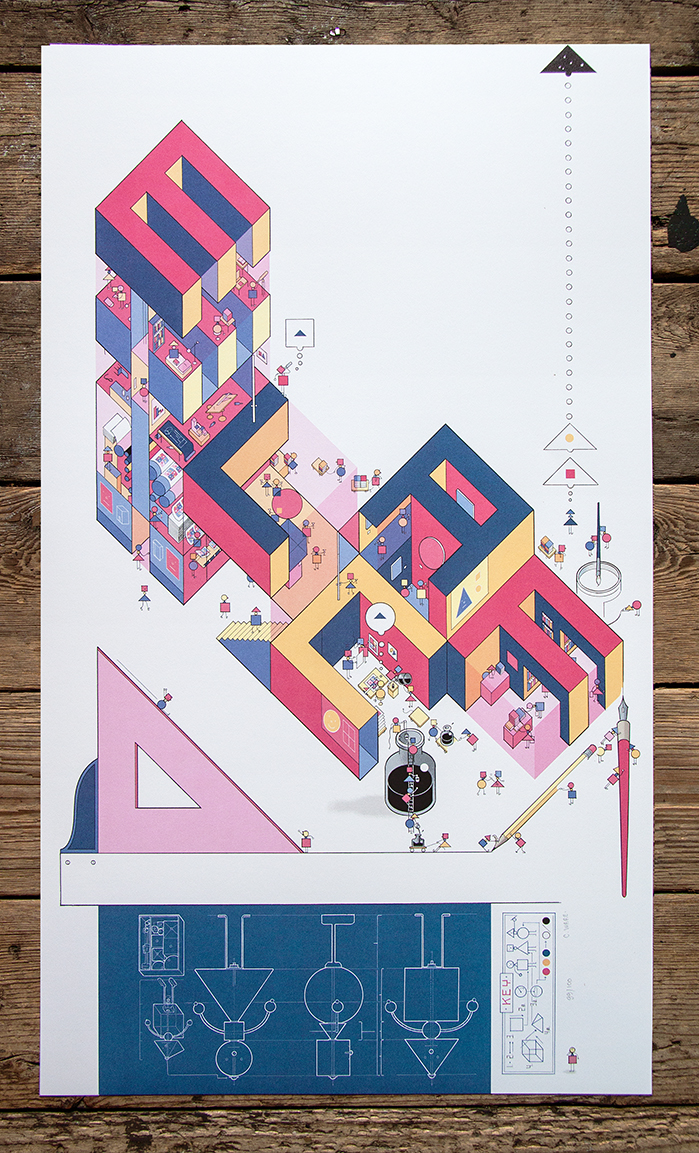Ware Print Shop Clone
The clone is a tricky method from java.lang.Object class, which is used to create a copy of an Object in Java. The intention of the clone method is simple, to provide a cloning mechanism, but somehow it's implementation became tricky and has been widely criticized from a long time. Anyway, we will not go to classic debate of clone in Java, at least for now; instead, we will try to learn how clone method works in Java.
To be fair, understating cloning mechanism in Java is not easy and even experienced Java programmer fail to explain how cloning of mutable object works, or a.In this three-part article, we will first see working of clone method in Java, and in second part we will learn how to override clone method in Java, and finally we will discuss deep copy vs shallow copy mechanism.The reason I chose to make this a three-part article is to keep the focus on one thing at a time. Since clone itself is confusing enough, it's best to understand concept one by one. In this post, we will learn what is clone method, what it does and How clone method works in Java.By the way, clone is one of the few fundamental methods defined by objects, others being equals, hashcode, toString along with wait and notify methods. An object which is returned by the clone method is known as a clone of original instance. A clone object should follow basic characteristics e.g. A.clone!= a, which means original and clone are two separate object in Java heap, a.clone.getClass a.getClass and clone.equals(a), which means clone is exact copy of original object. This characteristic is followed by a well behaved, correctly overridden clone method in Java, but it's not enforced by the cloning mechanism.
Which means, an object returned by clone method may violate any of these rules.By following the convention of returning an object by calling super.clone, when overriding clone method, you can ensure that it follows first two characteristics. In order to follow the third characteristic, you must override equals method to enforce logical comparison, instead of physical comparison exists in java.lang.Object.For example, clone method of Rectangle class in this method return object, which has these characteristics, but if you run the same program by commenting equals, you will see that third invariant i.e. Clone.equals(a) will return false. By the way there are a couple of good items on regarding effective use of clone method, I highly recommend to read those items after going through this article. Java.lang.Object provides default implementation of clone method in Java. It's declared as and native in Object class, so implemented in native code. Since its convention to return clone of an object by calling super.clone method, any cloning process eventually reaches to java.lang.Object clone method.
This method, first checks if the corresponding object implements Cloneable interface, which is a marker interface. If that instance doesn't implement Cloneable then it throws CloneNotSupportedException in Java, a checked exception, which is always required to be handled while cloning an object. If an object passes this check, than java.lang.Object's clone method creates a shallow copy of the object and returned it to the caller.Since Object class' clone method creates copy by creating new instance, and then copying field-by-field, similar to assignment operator, it's fine for primitives and Immutable object, but not suited if your class contains some mutable data structure e.g. Collection classes like ArrayList.
In that case, both original object and copy of the object will point to the same object in the heap. You can prevent this by using the technique known as deep cloning, on which each mutable field is cloned separately. In short, here is how clone method works in Java.
A.clone!= a, which means original and clone are two separate object in Java heap, a.clone.getClass a.getClass and clone.equals(a), which means clone is exact copy of original object'So hashcode is different but equals should return true. Isn't this a violation of the equals-hashcode contract?Anonymoussaid.How do you relate hash code here.?c the hash code calculation in above rectangle class. Its has nothing to do with the reference of the object.I have a question. Why is clone method protected by implementation?Anonymoussaid.Why it is protected - so that you can't call it on any object - the default shallow copy can be risky unless the class explicitly says its ok.
Classes should override it, return the appropriate type (instead of Object) and make the visibility public.even hashcode is different, but equals should return true, it is not violation of equal-hashcode contract, because if two objects having same hashcode, those objects value may be same, may not be same. But when two objects having same value, both objects hashcode must be same.Anonymoussaid.please provide the links for the 2nd and 3rd part of the clone articleAnonymoussaid.Return type of OVERRIDDEN clone method is Object in superclass, how can it be narrower i.e. Rectangle in subclass? Please correct me if I am wrong.said.' Anonymous said.Return type of OVERRIDDEN clone method is Object in superclass, how can it be narrower i.e.
Kim Washburn has been writing for children for more than ten years. While working at Focus on the Family, two of her original stories were recognized by the.  Oct 17, 2017 - Explore amyjoy67's board 'Pumpkin Patch Ideas' on Pinterest. See more ideas about Pumpkin, Pumpkin farm and Fall fest. Easy DIY Candy Corn Ring Toss with Glow Necklaces for a Fun Fall, Halloween,. Shantz Family Farm is a fall destination for many local families, schools, and groups! We are open daily from Mid-September till November 1st. PICTURE EXCLUSIVE: Kim Kardashian wears skintight black outfit to enjoy rides with North and Saint at festive pumpkin patch near Calabasas. Old Fashion Christmas. Carolling Hayride, All-You-Can-Roast Smores, Visit with Santa, Fresh-Cut Trees, Bakery and More! Find out more! Santa resized.
Oct 17, 2017 - Explore amyjoy67's board 'Pumpkin Patch Ideas' on Pinterest. See more ideas about Pumpkin, Pumpkin farm and Fall fest. Easy DIY Candy Corn Ring Toss with Glow Necklaces for a Fun Fall, Halloween,. Shantz Family Farm is a fall destination for many local families, schools, and groups! We are open daily from Mid-September till November 1st. PICTURE EXCLUSIVE: Kim Kardashian wears skintight black outfit to enjoy rides with North and Saint at festive pumpkin patch near Calabasas. Old Fashion Christmas. Carolling Hayride, All-You-Can-Roast Smores, Visit with Santa, Fresh-Cut Trees, Bakery and More! Find out more! Santa resized.
Rectangle in subclass? Please correct me if I am wrong.' - Java overriding rule: 'The return type should be the same or a subtype of the return type declared in the original overridden method in the superclass'said.Does Cloning makes use of reflection?

Craftware Download
If yes could you please explain why and how?Thanks.Anonymoussaid.' This information is enough to move ahead and read second part of this Java cloning tutorial, on which we will learn, how to override clone method in Java, for classes composed with primitives, Mutable and Immutable objects in Java.' Can't find second part!!!said.A Cloneable interface which gives permission to clone method in a given program which throws CloneNotSupportedException.U can check it more clearly in this video.here what listed is Example of Shallow copy right???said.@Uday, yes it's an example of shallow cloning, but given the object is Immutable it didn't really matter.
See the of this article for cloning an object with the mutable field, which involves deep copy.said.Point 3:'This can be dangerous because any change made on that mutable field will reflect in both original and copy object.' We can make changes if an object is Mutable.said.If equals method returns true the the hashcode must be equal,but reverse may or may not be equal.This is the only contract.said.Hi, can you please tell me what is the user of a clone method?Is an instance of a cloned object?said.@Adrian, clone is used to create copy of an object e.g. If you have a Date you can create another Date object by using clone, which has same attributes or state as previous Date object.said.Very nice article, just one correction, you said the clone method will work perfectly in case of immutable objects and primitive but in the 'Shallow copy' image, you have used String class which is immutable and pointing to same reference and that is not correct.said.Hello ansu, in case of Immutable object, multiple reference can point to same object, that's the whole purpose of making it object immutable. Since it cannot be changed, its safe to share.said.ansu, I had the same question as your after reading this article, but as Paul pointed out, the shadow copy is actually having all fields pointing to the same reference in heap; given that it is safe to point to the same reference for immutable/primitive objects, shadow copy is safe enough if the class only contains immutable/primitive objects.The second part of this series elaborates this in the first paragraph as well: you @Unknown for taking initiative and explaining to fellow reader. Much appreciated and yes, you are absolutely correct.
Ware Print Shop Clones
Using the Clone BrushIn this tutorial, you’ll learn the basics of how to use the Clone Brush tool to cover parts of an image (target area) by copying colors or patterns from another part of the image (source area). We will show you how to clone using a source area that is part of the same layer, a source area from another layer, and a source area from another image.Click on any of the images below to view full-size.